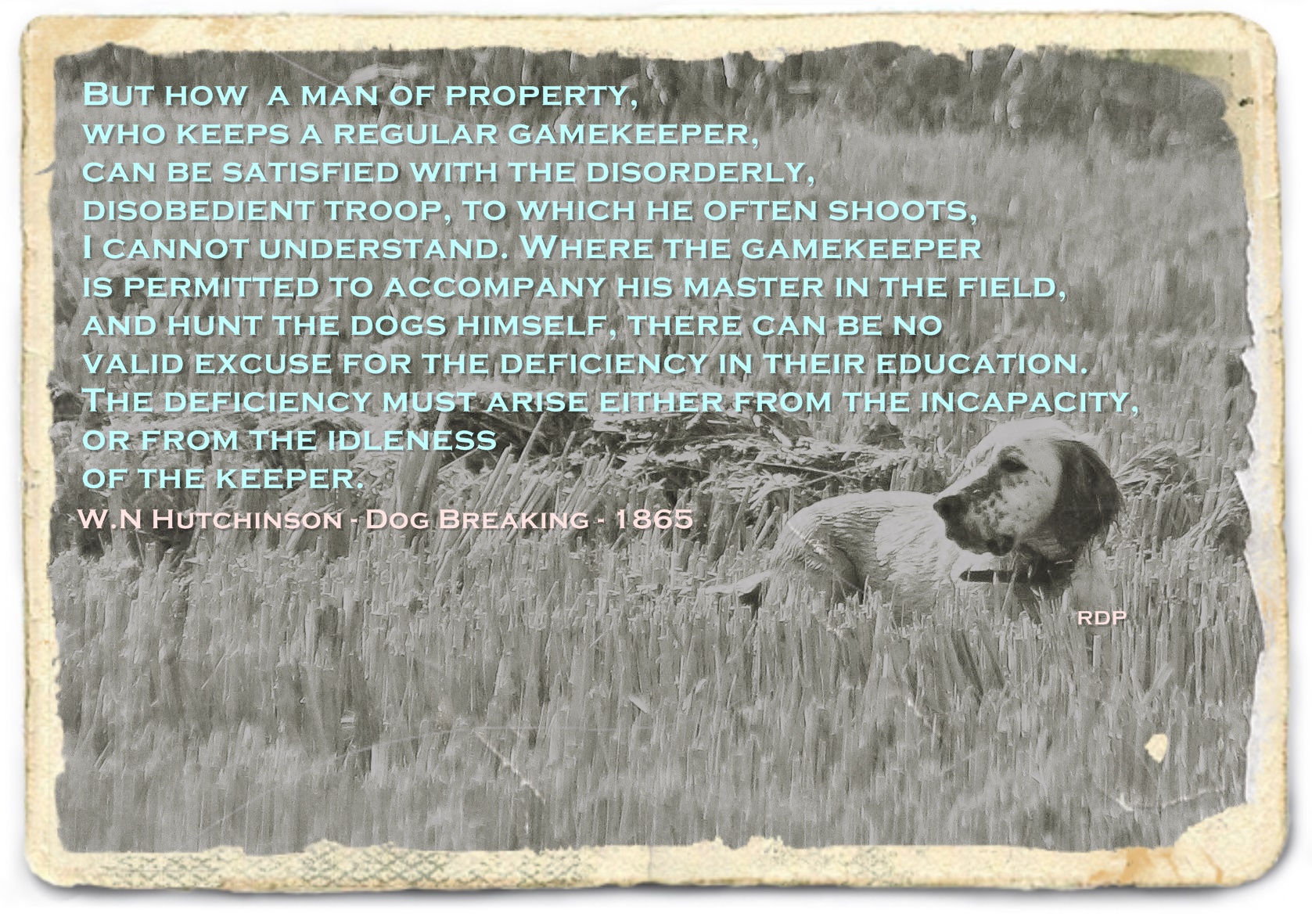
Break it Down- by Tok Mostert
There is no doubt that seeing a well trained dog doing everything right is a pure delight to owner/handler or observer, not to mention a judge. The seamless way they cut up a field missing no ground, the sudden stop and lock up on point, the flush on command, the stop, the marking of the fallen bird, the glance for permission to retrieve, the retrieve and the delivery all flowing like a gentle mountain stream over smooth rock. Pure dog poetry in motion!
What few understand is how exactly you get a dog to that level. Many fail due to their lack of experience, the experienced fail due to their lack of adapting. There is nothing more heartbreaking to watch than a handler train one dog after another in the same way, and making the same mistakes, dog after dog. For the novice it is a minefield of advice and methods, some good some totally disastrous!! Some novices will seek advice from the old dog hands, other will shun all help.
I have my own way of training a dog, most of it is old school, some of it is purely my way of doing things, I still do things wrong, but I learn from that pretty quickly when I fail my dog. Yes, I fail my dog, not the dog fails me. If I have not trained or exposed my dog to certain things, I am failing my dog, but that is another topic.
Getting back to watching a dog do everything right. To get to that level a good handler/trainer would have broken down every single step in the opening scenario and then he would have also compartmentalized the individual steps into single separate training sessions. Don’t get it?
The retrieve can be broken down as follows:
- Dog sitting steady by your side
2. Dog looks at you when you whisper his name or click your tongue
3. Dog takes dummy, or bird, from your hand on command, does not chew or play
4. Dog stays sitting as you walk away, does not drop the bird or dummy
5. Dog comes straight in when called, still holding the dummy
5.1 Dog does not keep circling you with dummy or bird
5.2 Dog does not drop the bird/dummy at your feet
5.3 Dog sits calmly with dummy in his mouth until you give him the deliver command
6. Dog holds steady on a cast, waits for command
7. Dog does not lift on the cast
8. Dog marks cast
9. Dog does not move when you walk and pick up dummy or bird
10. Dog does not move when you place multiple dummies out
11. Dog does not switch dummies/birds when they are placed together
This gives you a general outline of how small the different steps can be broken down into. It is the same for every single thing you train. The point, the flush, the way the dog works a field, everything. I have said times before, sit down and decide what signals you will use, whistle, hand or verbal, train them into yourself long before you try and teach them to the dog, this is crucial!
Do not be in a hurry to weave this all together into your invisible leash. Once the dog can 100% of the time complete these micro exercises you can start putting 2 together, then 3 and so on. This is the only way to forge a unbreakable invisible leash. Few dogs fall apart during trials, most of them fall apart under high volume high pressure shoots and hunts, this is exactly the time you can least afford it or correct it.
Many people wait for the season to open so they can let their dogs run on field and find birds, this is foolish when you can train so many other aspects before the field season opens.
Keep it fun, keep it focused!
Are you interested in gundogs? Check out the Gundog Research Project!
Tok Mostert, a Professional Hunter from South Africa, now living in Sweden, is sharing his writings on dog training with us. You can start reading them from Part 1 here.





Un commento
Pingback: